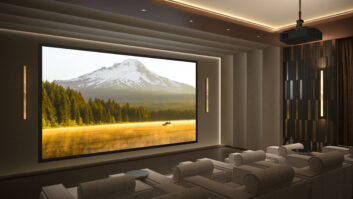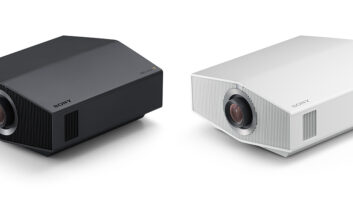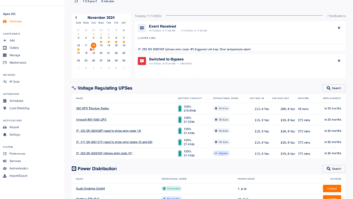With technology, bigger is not always better. Giant cell phone? Lame. Fat laptop? Ditto. But with amplifiers, bigger is generally preferred. Traditional wisdom holds that amplifiers be encased in vault-like chunks of metal, lined with heatsinks, feature massive toroidal power supplies, and have quality measured in poundage. Not only are these amps bulky, but they occupy a bunch of rack space, put off tons of heat, and suck down gobs of electricity.

Lexicon took a different multi-channel amp approach. By leveraging the power of parent company, Harman International, it partnered with Texas Instruments to develop a new technology called DriveCore. This design is meant to employ all of the advantages of efficient, Class D designs while delivering the performance of Class AB amps. DriveCore replaces a typical Class D amp’s 500-plus components with a dime-sized chip. And because of its 80-percent-plus efficiency, it is also fanless and silent.
The first amp featuring DriveCore tech is Lexicon’s new DD-8 ($2,500), an 8 x 125-watt model. The box was so light when it arrived on my porch, I momentarily wondered if Lexicon had mistakenly shipped me a DVD player. At little over nine pounds and 1U tall, I questioned whether this puny thing could actually deliver the promised 1,000 watts, 2 ohm stability and produce decent sounding audio.
Visually the amp’s aluminum faceplate and dark-gray chassis are recognizable as classic Lexicon. Rack-mount ears are included, and because of the DD-8’s cool-running temps, you could stack the amps on top of each other without any spacing. There are blue LED indicators for each amp channel and a soft power/standby button ringed in red (standby) or blue (on).
Like all amplifiers, the business takes place around back. There are Bus In/Out connections for looping shared sources to multiple channels/amps, as well as local inputs for each channel. Trim pots tweak the channel output level. Speakers connect via phoenix-type connectors that easily accepted my 14-guage wire. Interestingly, the channels connect +, -, +, – instead of the more common (and less chance of shorting) +, -, -, + method. The DD-8 features a seldom found but nonetheless awesome stereo/mono switch. Selecting mono internally combines the left and right channel information, which is perfect for areas where speakers are spaced far apart. I used this with my outdoor speakers and it solved that bizarre Beatles-stereo issue of voices in one channel and instruments in the other. For an audio distribution amp, this is a fantastic feature.
The DD-8 should satisfy even the greenest of audiophiles or any LEED projects. It consumes a meager 0.34 watts in standby, and there are trigger in/out inputs, and power-save and signal sense switches. That’s a lot of stuff in a 1U space, but it isn’t so crowded that working on it is difficult.
I initially connected the DD-8 to my home’s distributed audio speakers, but something in my system caused a ground hum that varied from mild to severe. I tried multiple combinations of plugging and unplugging and power conditioning and source components but couldn’t remedy the issue. Admittedly I have a ton of things in my rack (easily 20 power connections) so mine is not the typical install. I was able to listen hum-free with an iPod connected and I took the DD-8 to my custom install showroom where it had no ground issues.
At my shop, I connected two pair of speakers and ran them all day, every day for two weeks and the amp barely rose above cool. At my home, it indeed ran four speakers off a single channel, meaning that this single, nine-pound, 1U amp could conceivably drive up to 32 speakers; amazing! This is tremendous for filling large areas with sound, especially with the added flexibility of the stereo/ mono switch.
Most digital audio distribution amps have failed to impress me in the past; they often have a limited usable volume range and distorted top end. However, the DD-8 was definitely a superior performer, delivering full sound at lower volumes and not straining until the volume started reaching really loud levels. Also, its ability to handle twoohm loads means it can drive anything that you connect. As good as it sounded, the DD-8 didn’t have the amp muscle and control of the 62-pound Crestron SWAMP that preceded it. This was most noticeable on the lack of bass depth on songs like Christina Aguilera’s “Candy Man” or John Mayer’s “Waiting on the World to Change” and, well, pretty much any bass-filled, pop tune. They just didn’t have the same punch and low-end extension.
The DD-8 definitely proves that great things can come in small packages. Beyond sonic performance, it offers tremendous installation flexibility and the ability to easily add multiple speakers to larger listening zones. If space, heat or energy conservation are installation concerns, the DD-8 would be the perfect solution.
888.691.4171 | www.lexicon.com
Kudos
Incredibly lightweight, amazingly cool running temps, super green, wonderful stereo-to-mono switch AND it sounds great!
Concerns
Ground hum issue in my home
Product Specs
■ 8 x 125-watt multi-room power amplifier
■ Patented DriveCore amplifier technology, highly efficient and cool running
■ RCA Local and Bus Inputs
■ Independent stereo/mono selector switch and output level controls per zone
■ Dimensions: (H x W x D): 2.1 w/feet, 1.7 w/o x 17.3 x 14.9 inches; 9.2 pounds






